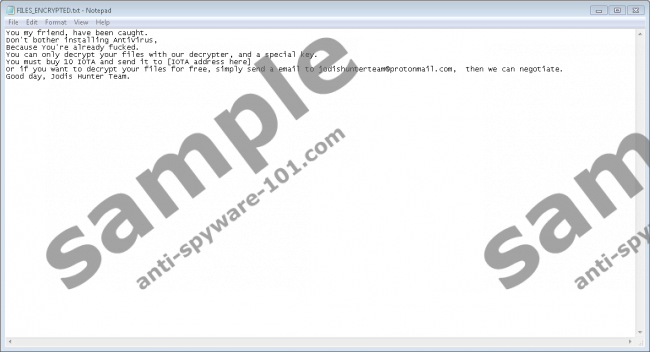What is Scammerlocker Ransomware?
Scammerlocker Ransomware is a malicious file-encrypting program. Some researchers think it might be targeted at scammers as a punishment for their malicious activities, although it would be difficult to confirm it. In any case, if you somehow encountered it, we advise you to keep reading our article and learn more about its effective manner, possible distribution channels, available removal methods, and other vital information. Slightly below the text, we will place manual removal steps too, so if you need any help with Scammerlocker Ransomware’s deletion feel free to use them. Also, users who have more questions about this infection or require any assistance while eliminating it could leave us a message at the end of this page or contact us via social media.
Where does Scammerlocker Ransomware come from?
There are a lot of possible channels to distribute such a threat. For example, the malware’s developers could spread Scammerlocker Ransomware through infected email attachments, fictitious updates, bundled software installers, malicious pop-up advertisements, etc. Consequently, to protect the system from such threats, we often recommend users not to open suspicious attachments received with Spam and keep away from torrent and other file-sharing web pages as such sites might contain malicious bundles, fake installers, etc. Lastly, the system would be less vulnerable if it there would be a legitimate antimalware tool that could stand guard and stop malware from entering it.
How does Scammerlocker Ransomware work?
One way or the other the system should get infected after downloading some suspicious data and interacting with it. First of all, the malware is supposed to hide on the system and silently begin the encryption process. During it, Scammerlocker Ransomware should encipher pictures, photographs, various documents, and other private data alike located in the Desktop, Documents, Videos, and Pictures folders. The affected data may look quite the same; it is just at the end of each file's title there should be a second extension. For instance, a document titled text.docx might get renamed into text.docx.jodis. Soon as this extension is added, the file that has it becomes enciphered, and so it cannot be accessed.
At the end of the encryption process, Scammerlocker Ransomware is supposed to show a ransom note named FILES_ENCRYPTED.txt or similarly. According to it, the enciphered data can be decrypted only with a specific deception tool and a decryption key. Also, the note should offer to purchase these tools for 10 IOTA, which is around 12 US dollars at the moment of writing. Additionally, the last sentence suggests the user could negotiate the price as it says “if you want to decrypt your files for free, simply send a email to jodishunterteam@protonmail.com, then we can negotiate.” However, our researchers believe the safest option is to use backup copies and erase the malicious program since the hackers cannot be trusted. In other words, there is a chance the victim might lose his money for nothing.
How to get rid of Scammerlocker Ransomware?
More experienced users could try removing Scammerlocker Ransomware manually. To do so, you should mainly locate and erase the malware’s installer. If you have no idea where to find it, you should check the instructions available at the end of this paragraph as they will suggest a few possible locations. Still, if you do not think you can manage it, we advise downloading a legitimate antimalware tool and performing a full system scan.
Eliminate Scammerlocker Ransomware
- Press Ctrl+Alt+Delete.
- Select Task Manager.
- Search for the malware’s process.
- Select this process and click End Task.
- Leave Task Manager.
- Tap Windows key+E.
- Navigate to the following paths:
%TEMP%
%USERPROFILE%\desktop
%USERPROFILE%\downloads - Find the file that infected the device.
- Right-click the malicious file and press Delete.
- Locate a file titled FILES_ENCRYPTED.txt, right-click it and press Delete.
- Close File Explorer.
- Empty your Recycle bin.
- Restart the system.
100% FREE spyware scan and
tested removal of Scammerlocker Ransomware*






0 Comments.